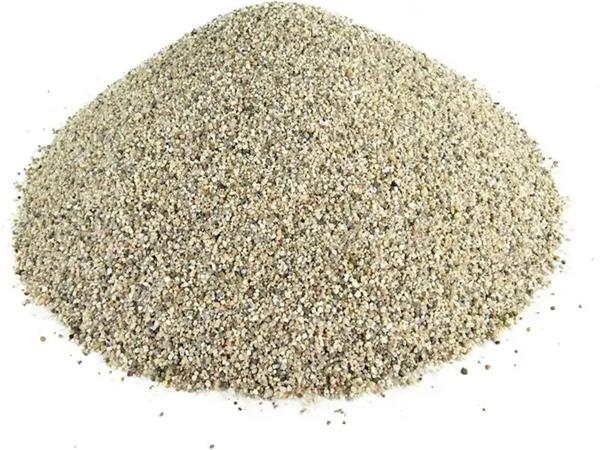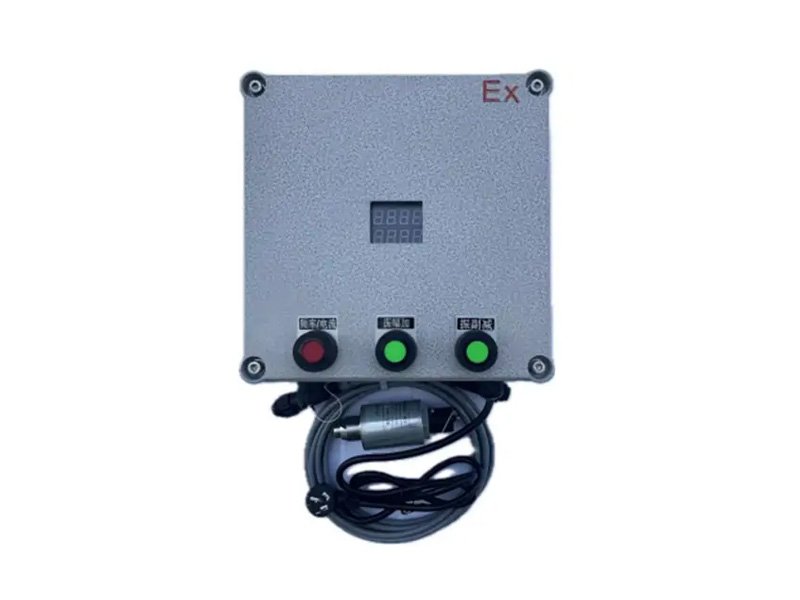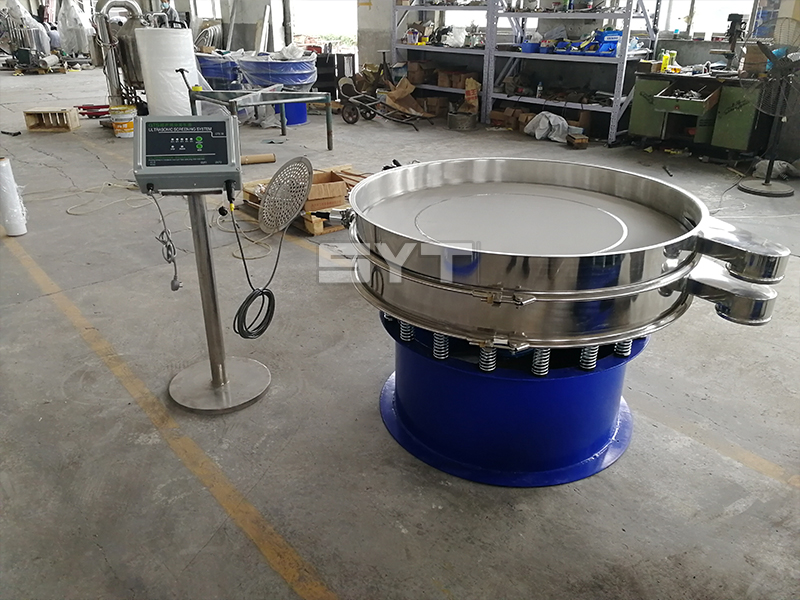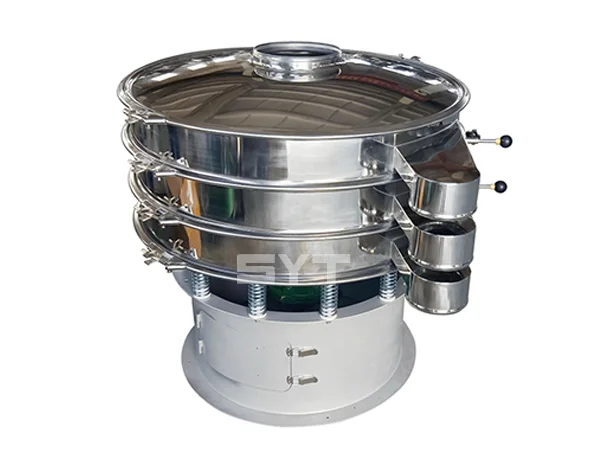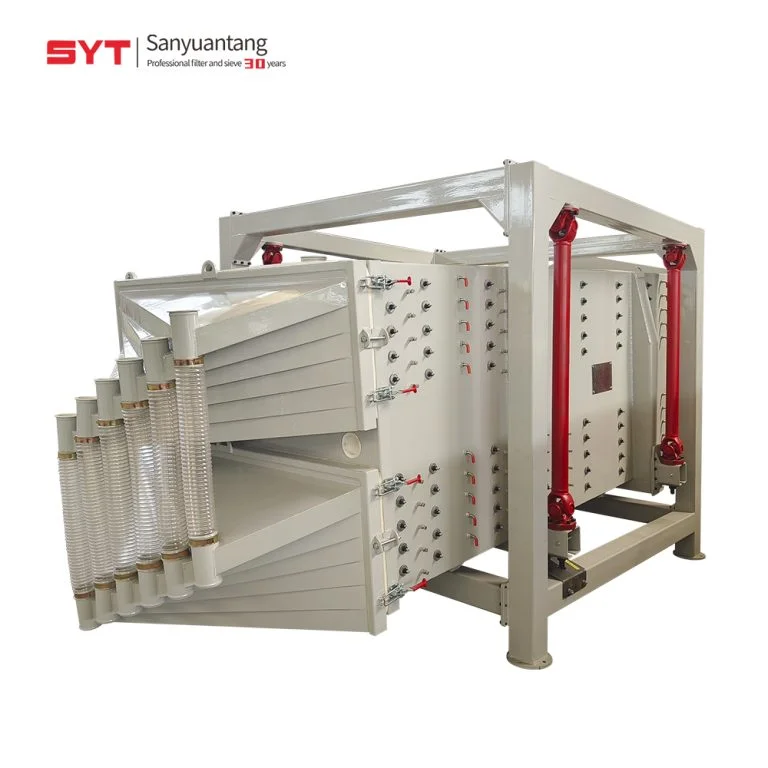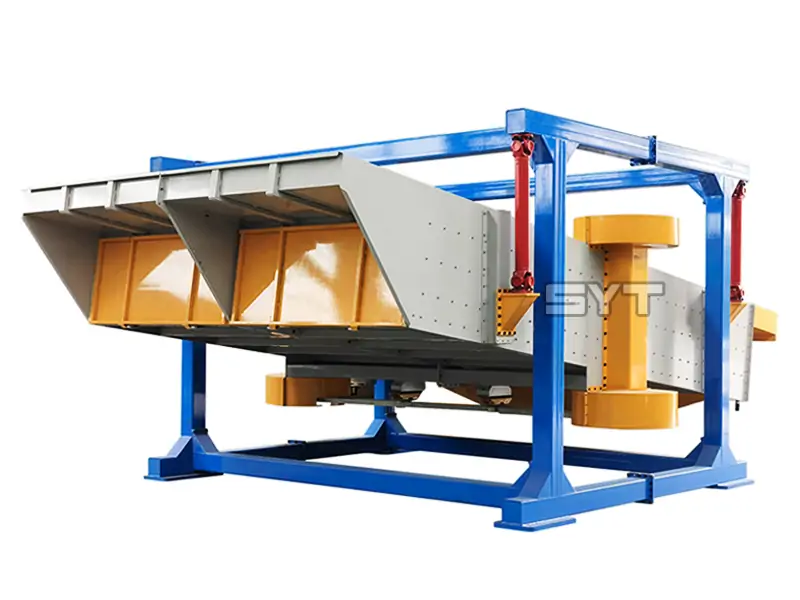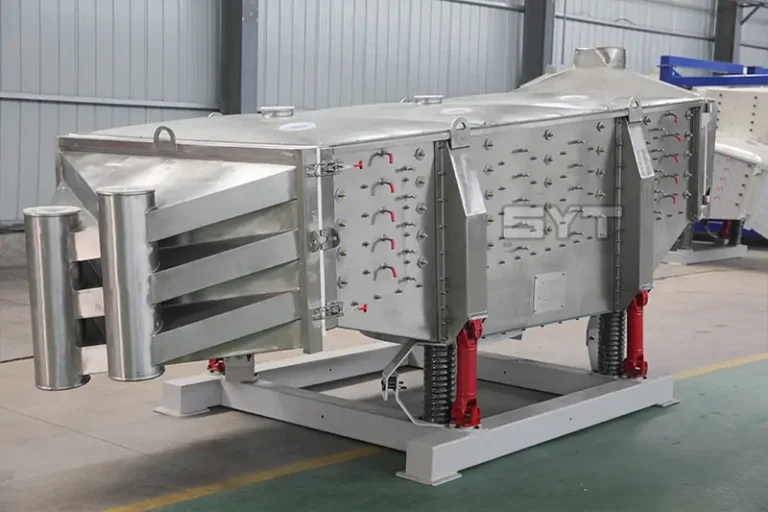A large-inclination swing probability vibrating screen is a traditional swing-type linear screen with a large inclination design added to it, which makes the unloading speed of materials faster. Traditional swing-type linear screens rely on the gentle vibration of the screen surface to push materials forward, which is suitable for finely crushed materials. However, when dealing with machine-made sand or natural sand, which are “hard materials,” they are prone to screen clogging and low screening efficiency.
The large-inclination swing probability vibrating screen effectively addresses these issues. The increased inclination angle allows materials to slide down rapidly like a slide, significantly improving screening efficiency. Through multi-layer screening, when materials enter the 304 stainless steel woven wire mesh surface, smaller particles can pass through the screen openings smoothly due to the screen’s swinging or vibrating motion, while larger particles remain on the screen. Combined with vibrating screen cleaning equipment, screen clogging is completely eliminated.
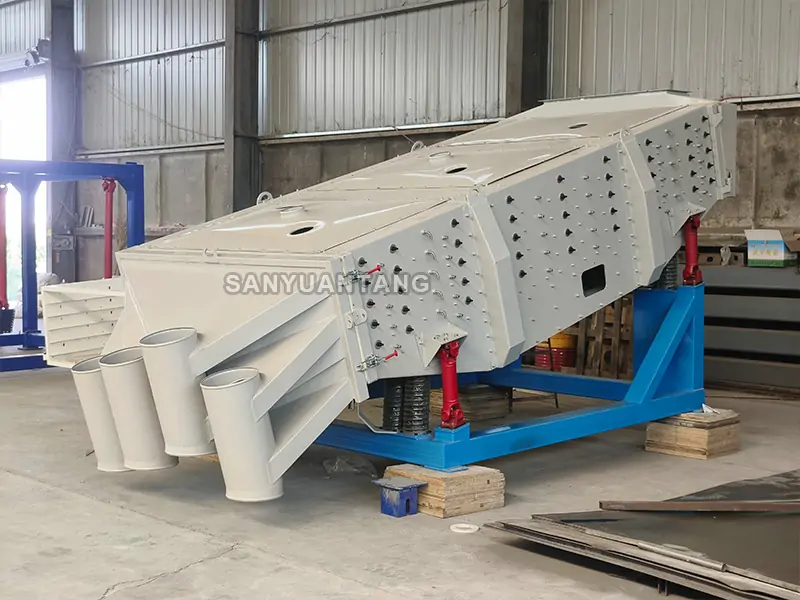
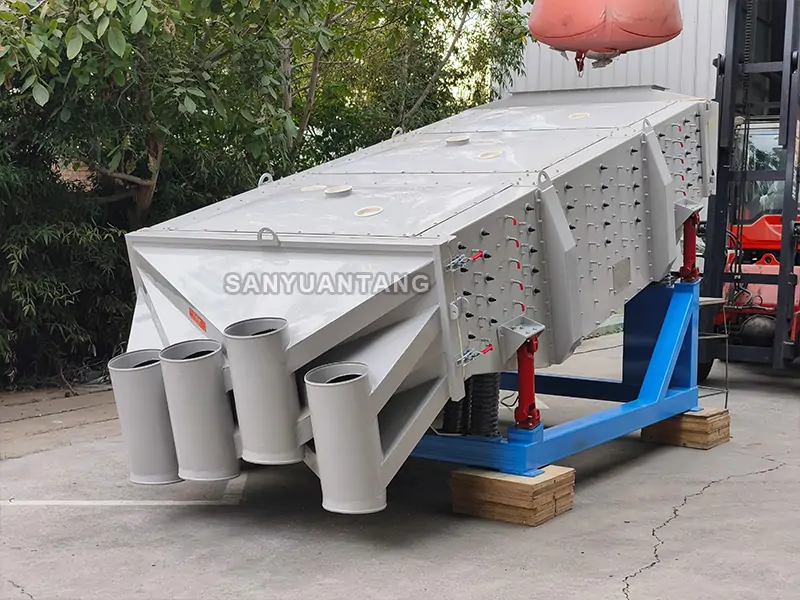

The Specifications of the large-inclination swing probability vibrating screen:
To facilitate understanding of equipment performance and selection criteria, the primary specifications and parameters of the large-inclination swing probability vibrating screen are listed below. This table covers key data such as screen mesh size, vibration frequency, and production capacity, providing a reference for equipment selection in various production environments.
| Number of floors | Screen surface | Screen mesh size | Screening principle | Motion type | Vibration frequency | Production Efficiency | ||
| screen material | mesh size | inclination angle | ||||||
| 3-6 | 304 stainless steel woven wire | 150-550μm | 30°-60° | 2-100mesh | Probability screening | Swing motion | 850-1000(1/min) | 5-100 t/h(When screening coarse materials) |
The above parameters are for reference only. Actual performance may vary depending on material characteristics, process conditions, and installation environment. Adjustments based on actual production conditions are recommended. Probability vibrating screens are available for customization. Please contact us if you require any modifications.
Motion mode and screening principle of the large-inclination swing probability vibrating screen
Motion mode: Three-dimensional swinging motion
Unlike the linear, circular, or elliptical vibration modes of traditional vibrating screens, this equipment adopts a three-dimensional swinging motion.
Drive and trajectory: The drive unit located at the top or side of the screen body drives the entire screen box, including the screen mesh, to swing along a specific three-dimensional spatial trajectory in an approximate circular, low-acceleration micro-elliptical motion.
Motion Characteristics: This motion trajectory is smooth and stable, reducing mechanical impact.
Core Advantages:
- Low Noise and Stability: The gentle motion significantly reduces impact on critical components such as bearings, effectively lowering operational noise and extending equipment lifespan.
- Excellent Material Adaptability: The low-impact characteristics of the large-inclination swing probability vibrating screen make it particularly suitable for screening fragile crystals, deformable particles, or materials requiring strict crystal integrity, effectively preventing damage.
- Anti-clogging screen: The oscillating motion promotes uniform dispersion and rolling of materials on the screen surface, reducing the risk of particles getting stuck in the screen openings.
- Agglomeration breaking capability: The rolling action of materials helps break up slightly agglomerated particles, enhancing screening efficiency.
 Dry mortar
Dry mortar Dolomite
Dolomite Perlite
Perlite Silica Sand
Silica Sand Quartz sand
Quartz sand Mineral powder
Mineral powder Calcium carbonate
Calcium carbonate Crude salt
Crude salt
Screening principle: Probabilistic screening
This equipment employs probabilistic screening principles for efficient separation, with the core principle being the utilization of probability differences in particle passage through screen openings based on particle size.
Screening process:
Material is uniformly conveyed to the top of the screen. Under the influence of three-dimensional oscillating motion, the material rapidly spreads, layers (fine particles sink, coarse particles float), and moves forward on the screen surface. Particles smaller than the screen openings pass through first as undersize material; particles larger than the screen openings are discharged as oversize material.
Probabilistic separation: A portion of “critical particles” with particle sizes close to the screen aperture size may become oversize material or undersize material based on their dynamic distribution, movement state, and instantaneous opportunities on the screen surface. This significantly improves processing efficiency.
Advantages of probabilistic screening:
- Processing capacity: Compared to conventional precision screening equipment of the same specifications, the large-inclination swing probability vibrating screen combines probability screening with oscillatory motion, achieving a significant increase in material processing capacity per unit time.
- Anti-clogging: The synergistic effect of the probabilistic screening mechanism and three-dimensional oscillating motion fundamentally reduces the likelihood of screen aperture blockage.
- Particle size distribution: Particularly effective at processing materials with a wide particle size distribution range, reliably separating them into several predefined particle size intervals.
Common industries for large-inclination swing probabilistic vibrating screens
Mining: Iron ore, gold ore, phosphate ore—handling large-sized materials is no problem.
Construction materials: Artificial sand, natural sand, washed salt, sea salt… Processing 100 tons per hour is a breeze.
Chemical industry: Industrial salt, petroleum coke, fertilizer—screening without screen clogging is a real advantage.
FAQ
Q1:Why does the Large-inclination Swing Probability Vibrating Screen have an angle?
A1:The inclination angle enables the Probability Vibrating Screen to efficiently sift materials downward. Due to this angle, materials roll across the screen deck and, through the screen’s vibration, flow to the next deck for improved separation.
Q2:Does the inclination angle of the Probability Vibrating Screen affect material screening efficiency?
A2:It does have an impact. A steeper screen inclination increases the surface gradient, accelerating particle movement and reducing dwell time on the screen. This facilitates material discharge and increases throughput.
Q3:Can the Large-inclination Swing Probability Vibrating Screen be customized to my requirements?
A3:Certainly. For environments with special requirements such as dust prevention, cleanliness, or explosion protection, we can provide customized solutions based on standard models. These include adding spray systems, dust collection systems, or explosion-proof motors.
For detailed customization information, please contact us with your specific requirements or refer to our product pages:Large-inclination Swing Probability Vibrating Screen
Q4:What maintenance considerations are important for Probability Vibrating Screens?
A4:Maintain motor lubrication by replenishing lithium-based grease (ZL-3) every two weeks. Add grease through the oil cup, except for sealed bearings which lack an oil cup. Thoroughly clean the vibrating screen after each use to prevent rust or clogging. Probability Vibrating Screen maintenance is an ongoing task; please consistently follow operating guidelines.If you encounter an issue that you cannot resolve on your own, please contact a professional technician immediately.
Conclusion:
Through the above content, we have understood the working principle, advantages, and common application industries of the large-inclination swing probability vibrating screen. Our company not only provides large-inclination swing probability vibrating screens but also specializes in the production of various models of gyratory vibrating screens. Additionally, we offer customized complete production line equipment, including crushing equipment, sand and gravel conveyors, vertical lifting devices, and more. If you require detailed product information or equipment procurement consultation, please contact us immediately. Our professional team is always ready to provide technical support and services.



